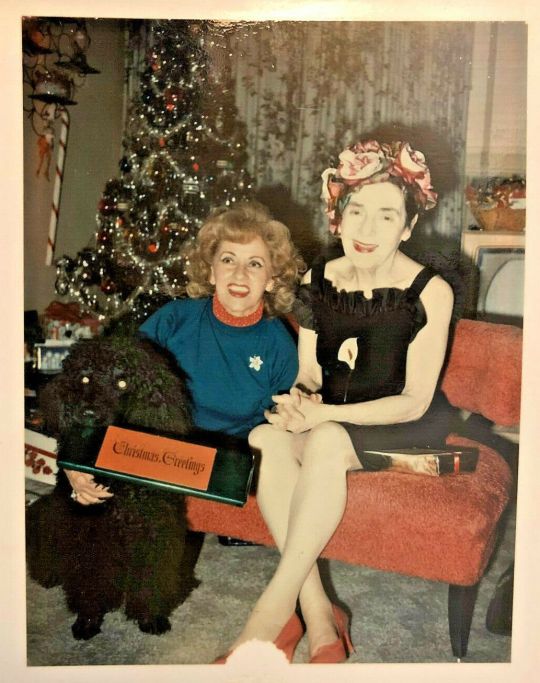#fannie hurst
Text

Claudette Colbert holding Fannie Hurst’s novel, “Imitation of Life,” to promote John Stahl’s 1934 film in which she stars.
77 notes
·
View notes
Photo


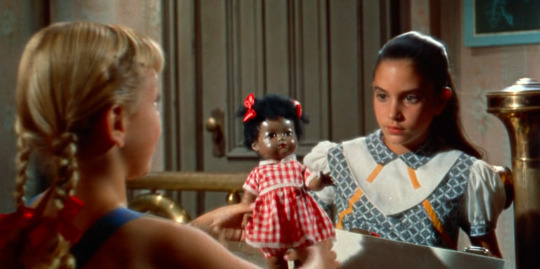
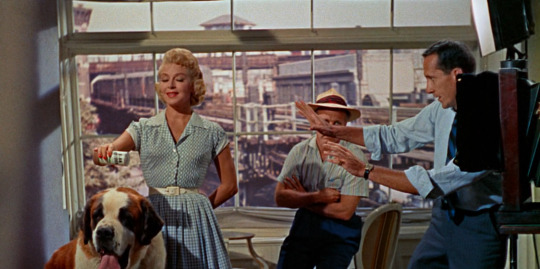





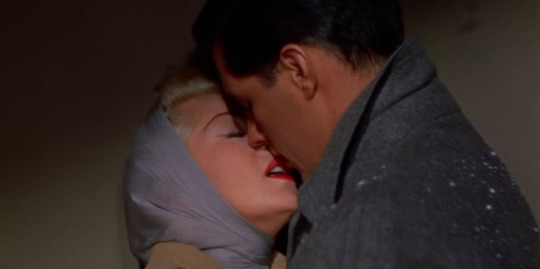
Imitation of Life (Douglas Sirk, 1959)
#Imitation of Life#Douglas Sirk#Fannie Hurst#Russell Metty#Lana Turner#Juanita Moore#John Gavin#Terry Burnham#Karin Dicker#Robert Alda#Film
39 notes
·
View notes
Text
putterings, 279-277
or a chance word be the seed of an idea,
but most often, not
of the theater, the heap of garments,
the violet-tinted note, water,
anathematized method
idle theories or chimerical clues,
and the wide world in which to forget it all
intuitionism; anticipatory shades
—
puutterings | their index | these derivations | 20230320
6 notes
·
View notes
Text
BACK PAY
1921

Back Pay is a play in three acts and an epilogue by Fannie Hurst, based on her 1919 short story of the same name which was published in Cosmopolitan Magazine. The play was originally produced by A.H. Woods and staged by Elwood F. Bostwick, who also appeared in the cast billed as E.F. Bostwick. It starred Helen MacKellar as Hester Bevins.
The cast also included Lucille LaVerne, who later provided the voice of the Queen / Witch in Walt Disney's 1937 animated film, Snow White and the Seven Dwarfs.
Hester Bevins is a simple country girl who yearns for adventure. Though she has a handsome young man, Jerry, who is devoted to her, she leaves her village and goes to New York in search of a grander life. There she becomes the lover of a wealthy and unscrupulous businessman. But when Jerry returns blinded and dying from the war, Hester must choose between her new life and the man whose loyalty to her has never failed.
Hurst’s short stories inspired several successful plays and films: Humoresque (1920 & 1946), Imitation of Life (1934 & 1959), and Back Street (1932 & 1941), to name a few. Her total publications over her nearly six-decade career include 19 novels, over 300 short stories, 4 plays produced on Broadway, and screenplays for several films.
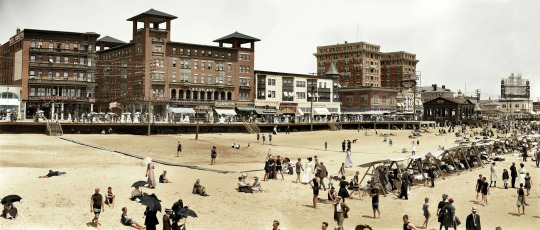
Back Pay premiered in Atlantic City at Woods Theatre (owned an operated by the producer) on the Boardwalk on August 14, 1921. The theatre was later known as the Savoy. The same night that Back Pay opened in Atlantic City, A.H. Woods also opened another play, The Pink Slip, in Asbury Park, about an hour away. After its AC engagement, Back Pay replaced The Pink Slip in AP. The Pink Slip was given a pink slip and never made it to Broadway. Not so for Back Pay. In the meantime, Back Pay moved from AP to LB (Long Branch) on its flight path to Broadway.
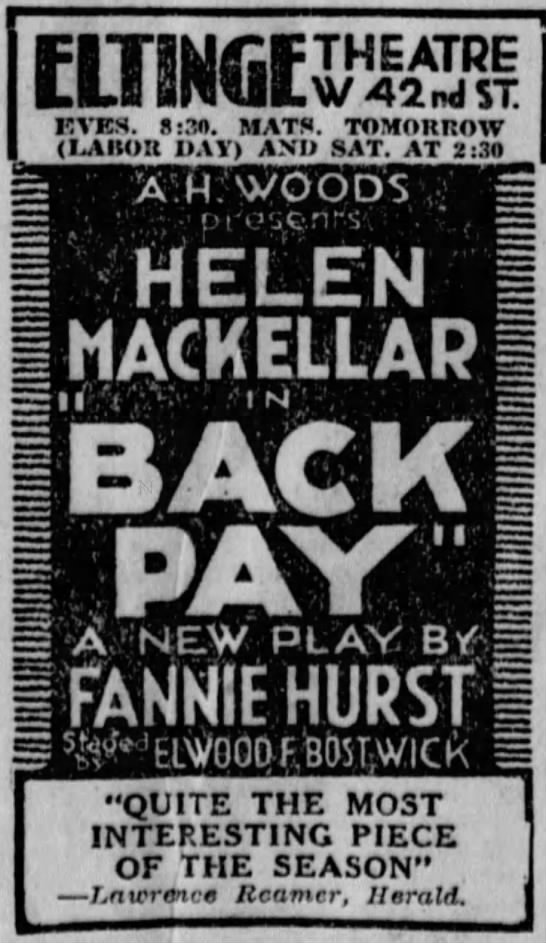
Back Pay opened on Broadway at Eltinge’s 42nd Street Theatre On August 30, 1921. It ran 79 performances.

Back Pay was filmed in 1921 starring Seena Owen as Hester. In Atlantic City, it played at the Criterion Theatre on the Boardwalk in late July 1922. Scenes were filmed in New Jersey at the Delaware Water Gap.
“The screen version contains milk and water, where the stage play contained warm blood. Obviously the play has been contorted to meet the demands of censorship. This has emasculated it.” ~ JAMES W. DEAN

Back Pay was filmed again (this time with sound) in 1930 starring Corinne Griffith as Hester. It was first screened in Atlantic City at the Stanley Theatre (later known as the Roxy) on the Boardwalk in mid-June 1930.
#Back Pay#Fannie Hurst#Helen MacKellar#A H Woods#Atlantic City#New Jersey#boardwalk#Woods Theatre#Broadway#Broadway Play#Eltinge's 42nd Street Theatre#1921#Play
2 notes
·
View notes
Text
haggling days, liability days. asset days.
Sooner or later, Morris got his way.
A gentle, insidious way. A way that had transformed his father from a petty, puttering dealer in used furniture in Delancey Street; a lean, argumentative little old man with a protruding chin and a curl of goatee that was pretty constantly waggling from haggling; into the dim old man whose beard was mostly quiet now and faint with Havana where it had once reeked with meerschaum.
The old man’s haggling days were over.
He sat now most of the time in the bow of the brace of sunny living-room windows that overlooked waves of upper West Side roofs and a distant slash of Hudson River.
Once the old man summed it up rather grimly for himself, sitting there the long leisurely hours through, his head dozy on his chest. Not only were his haggling days over, the old man concluded. But his days were over.
The old man’s days were over.
—
— Fannie Hurst, “The Gold in Fish,” encountered at More Aces, A Collection of Short Stories..., compiled by the community workers of the New York Guild for the Jewish Blind (New York, 1925) : 157-207 (158) : link
the story first appeared in Hearst’s International Combined with Cosmopolitan 79 (August 1925) — with illustrations by R. F. Schabelitz — 28-31, 185-194 : link
The son will change his name... his entire family’s name —
“Mother, you don’t understand — —”
I don’t understand! I understand that my son comes home and announces to me and his papa, like it was so much weather, [30] that we ain’t named Goldfish any more. We’re named Fish!”
“No, no. Not like it was so much weather, mother. I’ve explained it to you carefully at least six times since I entered this room ten minutes ago, that I have changed our name legally because it was a liability and not an asset. No man named Morris Goldfish can hope to achieve the position in life that I have mapped out for myself. For us.”
“Forty years now, son, I been a Goldfish and —–”
“Morris Goldfish and Maurice Fish are two different human beings, mother. Certain walks of life are closed to Morris Goldfish that I, as Maurice Fish, propose to enter.”
“You hear that, papa. The name that was good enough for you to get born into, and for me to marry into, is somethink to be ashamed of. Irma, ain’t you got no pride in family? Ain’t the name that was good enough for you to marry when you married my son, good enough now so you don’t got to make a laughing-stock of you and your children by changing it?”
Mrs. Maurice Fish, née Irma Striker, had gray eyes and a nose that had been straightened. Bloodlessly. “It would have to be bloodlessly,” had been Birdie’s trite comment. “The stuff don’t flow in her.” Irma’s finger nails were flaming ruby cabochons which hung from her hands in glowing convex surfaces. Irma’s hair, bobbed, was marcelled so that only the boyish shave peak in the back revealed it.
Irma called her nurse-maid a bonne.
Irma weighed one hundred and fourteen pounds and attended Lyman Wastrel’s Stretching Classes for weight reduction.
Daughter, and Morris/Maurice’s sister Birdie, is the fulcrum of the story. She appears at page 185 (Hearst’s International) : link
—
The story is included in Fannie Hurst, Song of Life (1927) : 60 : link
0 notes
Text
The Bingley sisters and the Ferrars would be the best friends or mortal enemies there's no inbetween
#caroline bingley#louisa hurst#fanny dashwood#pride and prejudice#p&p#p&p 1995#sense and sensibility#s&s
3 notes
·
View notes
Text
Austen siblings: the worst of the worst
Please vote based on their depiction in the books, not the movies. Other than that, use whatever criteria you want. Most toxic? Least well-suited to each other? Most well-suited to being awful together? Most annoying? Least realistic? Up to you!
These are in alphabetical order by last name, so read the whole list before voting!
I have a best Austen siblings poll too.
#yes the crawfords are on both the best and worst polls#and i expect will get votes on both#jane austen characters#jane austen#siblings#polls
77 notes
·
View notes
Text


Resolution of the Nevada Suffrage Ratification Committee of the National American Woman Suffrage Association
Record Group 46: Records of the U.S. SenateSeries: Petitions and Related Documents That Were Presented, Read, or TabledFile Unit: Petitions and Memorials, Resolutions of State Legislatures, and Related Documents which were Presented, Read, or Tabled during the 65th Congress
handwritten at top of document binder] 33 S Return uncut! [document is typed] Assembly Joint and concurrent Resolution No. [No. is marked through by hand] [handwritten] )-ec center [handwritten] fe WHEREAS, there is now pending before the Senate of the United States a resolution to submit to the several states an amendment to the Constitution of the United States, granting the right of suffrage to women; and [handwritten] fe WHEREAS, the President of the United States has urged the passage of such resolution, not only as an act of justice to the women of America, but as a means of encouraging the acceptance of democratic ideals throughout the civilized world; and WHEREAS, the world war laid its burdens and sacrifices with even hand upon men and women alike, and demanded and received from both the fullest measure of patriotism and devotion, in order that the great purposes for which the war was successfully fought might be permanently secured for the benefit of mankind; and WHEREAS, in the period of re-adjustment and re-construction, upon which we have entered, there will arise the most difficult and far-reaching moral, social, economic, industrial and political problems that must, of necessity, affect the lives of all our people for generations to come, and in the solution of which men and women must equally be concerned; [handwritten line connecting concerned; to THEREFORE] THEREFORE, BE IT [handwritten paragraph symbol] ¶ RESOLVED by the Assembly, the Senate concurring, that the Senate of the United States be hereby requested to immediately pass such resolution to submit to the states for their approval the Susan B. Anthony Amendment to the Constitution of the United States; and [handwritten curved line] [handwritten] overBE IT FURTHER RESOLVED that the Senators from Nevada be requested to present this resolution to the United States Senate and to energetically and actively support the resolution submitting such amendment. [handwritten] St [illegible] [handwritten signatures] Helen I. Belford Sadie D Hurst Mrs I. B. Church Emma G. Vanderhuth Mrs. W. H. Hood Mrs. Mark. Walsen Mrs. F. G. Patrick Fannie U. McKenzie Mrs. C. H. [illegible] Mrs. R. D. Eichelberger Mrs. W. H. Bray Mrs. Christina W. Clark Mrs. Tegmen M Daniel (Mrs) O. H. Mack Mary [illegible] Mary A Boyd [handwritten curved line] [handwritten] Nevada Suffrage Ratification Committee of the National American Woman Suffrage Association Endorsed by The Woman Citizens Club of Reno Nevada
23 notes
·
View notes
Note
What Elizabeth/Darcy ff would you recommend?
I might be a bad person to ask... I'm very picky. And I am NOT making fun of or disparaging what other people like, this is just about what I like.
My biggest thing is for characters to be in character, so no ShyBoiTM Darcy or Obstinate-Head-Strong-Girl Elizabeth (that was an insult not a compliment or an accurate description of her character. In JAFF she is often "obstinate" to the point of stupidity). I also am not a huge fan of 1995, so I cringe when "Fanny" Bennet shrieks and is described as shrill (her name is most likely Jane, I just avoid naming her). And of course I don't like Screaming-Bag-of-Evil Caroline. Or a Charles who hates Caroline (there is no evidence in the book that they dislike each other, there is counter-evidence in fact...)
The compromise trope bothers me so much that I wrote an entire story about it’s logical endpoint.
This is why I write my own stuff...
But never fear! I have a few favourites. Free Stuff first:
The Life and Opinions of Gilroy Hurst, Gentleman - This is a variation and POV retelling, by Mr. Hurst. It's hilarious and his opinion of Darcy is spot on. It is very much 1995 but because it’s also a farce I don’t mind.
The True Adventures of Fitzwilliam Darcy, Time Traveler - Time travel variation, I loved watching Darcy Elder hate how arrogant and awful his past self was, which is delicious.
Saving Oakham Mount - a little farce that makes fun of JAFF tropes, love this sort of thing.
Under Good Regulation - one of my favourites from Amelia Marie Logan. We occasionally collaborate on stories. I like most of her stuff.
A Glimpse - where Elizabeth and Darcy both get a glimpse of the future. Also by Amelia Marie Logan.
And now published stuff:
I like Pride & Prejudice & Zombies. I thought it was clever and I have the sequel and I read his Abraham Lincoln book too.
Letters from Pemberley by Jane Dawkins
The Companion of his Future Life by Jack Caldwell (this novel might not even be that good, I'm just a Mary and Collins shipper)
The Pursuit of Mary Bennet by Pamela Mingle (focuses more on Mary, not sure if this one qualifies)
Darcy's Story by Janet Aylmer
Darcy's Voyage by Kara Louise
And then the smutty and not very canon The Truth About Mr. Darcy by Susan Adriani because sometimes you just need some light fun and smut.
Some of these I liked before I started really getting into Jane Austen, so my continued preference might be based more on prior feelings than current prejudices.
Also, I don’t read a ton of FF anymore. I work full time and I write my own JAFF most evenings while also attempting to have a post-pandemic social life. I also just made a commitment to re-read LOTR. And I also do this. So again, I’m maybe not the best person to ask.
#JAFF#pride and prejudice#elizabeth bennet#fitzwilliam darcy#I am very much into very close charaterizations#1995 is fine it just isn't the book and some characters are not portrayed properly#like Mr. Collins and Mrs. Bennet#and I spend so much time telling people that 1995 quotes aren't in the book that it has soured the whole thing for me#No Lydia didn't steal kitty's bonnet#And Caroline didn't mock a little shop#I do still enjoy JAFF#but I'm picky#stop telling me Darcy/Elizabeth have untamed hair!
49 notes
·
View notes
Text
The American writer is attracted toward the archetypal pattern of Shylock and Jessica, the sinister Jew deprived of his lovely daughter; but he cannot treat it with the comic aplomb of Shakespeare or even the Romantic blitheness of Scott. In his work, a tragic blight falls over the Gentile myth of assimilation, the dream of rescuing the desirable elements in the Judaic tradition (maternal tenderness and exotic charm: the figure of Mary) from the unsympathetic (patriarchal rigor and harsh legalism: the figure of the High Priest and Father Abraham). […]
Long before the Jewish novelist existed in America, at any rate, the Jewish character had been invented, and had frozen into the anti-Jewish stereotype. Indeed, one of the problems of the practicing Jewish-American novelist arises from his need to create his protagonists not only out of the life he knows, but against the literature on which he, and his readers, have been nurtured. In order to become a novelist, the American Jew must learn a language (learn it not as his teachers teach it, but as he speaks it with his own stubborn tongue) more complex than a mere lexicon of American words. He must assimilate a traditional vocabulary of images and symbols, changing even as he approaches it—must use it, against the grain as it were, to create a compelling counter-image of the Jew, still somehow authentically American.
No wonder Jews are not only businessmen and workers, trade-union officials and lawyers, psychoanalysts and theater-owners but even actors, singers, musicians, composers of popular songs and makers of movies before they are writers. First the world of work and commerce, then of the professions, next that of popular culture, and only last of all, that of serious literature opens up to the American Jew. He can make the nation's songs like Irving Berlin or define its dream of the vamp like Theda Bara; he can even provide the ersatz of fiction like Fannie Hurst or Edna Ferber, act out for the laughs travesties of himself on the vaudeville stage with Smith and Dale or in the Saturday Evening Post with Montague Glass's Potash and Perlmutter. On such a level he speaks neither as a Jew becoming an American nor as an American who was a Jew; he communicates in the nonlanguage of anticulture, becomes his own stereotype. It is for this reason that the popular arts in the United States continue to this day to speak with a stage "Jewish accent." This is, however, only one more hindrance in the way of the serious Jewish writer, who must come to terms not only with Achsa Fielding and Gabriel von Gelt, but also with Sophie Tucker and Eddie Cantor.
—Leslie Fiedler, “The Jew in the American Novel,” from his collection To the Gentiles, 1972 (emphasis mine).
3 notes
·
View notes
Photo







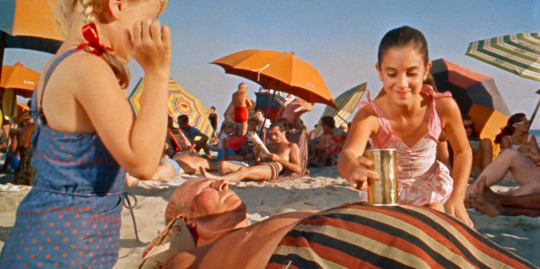


Imitation of Life (Douglas Sirk, 1959)
#Imitation of Life#Douglas Sirk#Fannie Hurst#Lana Turner#Juanita Moore#John Gavin#Terry Burnham#Karin Dicker#Billy House#Russell Metty#Film
13 notes
·
View notes
Text

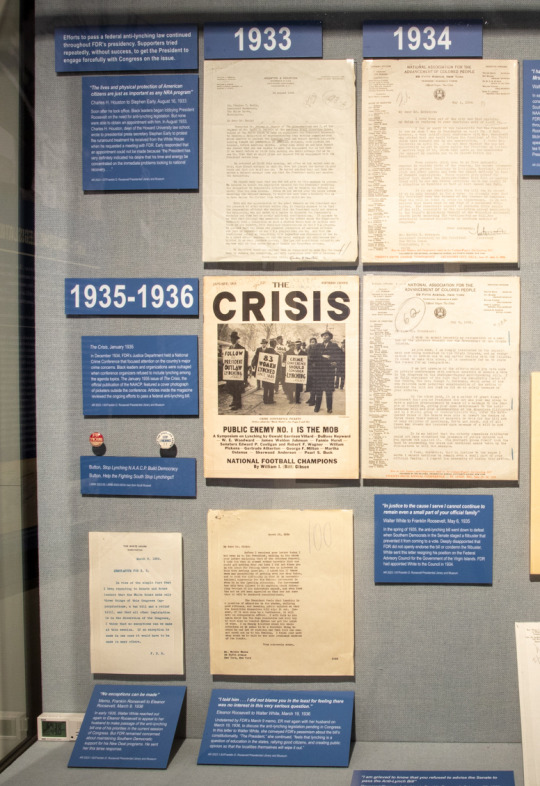
The NAACP's "Crisis" magazine made anti-lynching legislation a central issue in the 1930s. White allies like writers Fannie Hurst and Robert Sherwood joined black writers like James Weldon Johnson and William Pickens in meetings and symposia to draw attention to the horrors of lynching and its corrosive effect on American life.
5 notes
·
View notes
Text
putterings, 280, 282
Punch
as it was, he was of mustard . quite
mostly quiet now and faint
most of the time in the bow of the brace
like it was so much weather,
stretching days;
overlooked waves
a distant slash
—
puutterings | their index | these derivations | 20230325
1 note
·
View note
Text
Zora Neale Hurston’s hand-drawn Christmas card
Zora Neale Hurston’s hand-drawn Christmas card (1926). From Fannie Hurst’s papers at the Harry Ransom center in Austin, TX. Via the Ransom Center’s Instagram account.

View On WordPress
2 notes
·
View notes
Text
or a chance word be the seed of an idea, but most often
General Methods. “Almost invariably my plots emerge from characters, rather than characters from plots. I doubt if this latter is ever as sound in method except in the detective or picaresque story.
“I have never based a short story upon a concrete incident, written a character directly from life,’ or, except rarely, incorporated a speech actually heard into dialogue.
“A situation may suggest the beginnings of a story, or a chance word be the seed of an idea, but most often I find myself puttering around the hypothetical psychology of folks.…
“Unity of Effect, no matter how the unities must be smashed to attain it, I consider the corner stone of short-story writing. Without it, architectural beauty and continuity of development are impossible.…”
— Fannie Hurst.
in chapter on Fannie Hurst’s “Get Ready the Wreaths,”
in Blanche Colton Williams, How to Study “The Best Short Stories” — “An analysis of Edward J. O’Brien’s annual volumes of the best short stories of the year prepared for the use of writers and other students of the short-story” (Boston: Small, Maybard & Company, 1919) : 109-111 (111) : link
several copies of the above via hathitrust, including NYPL : link
Hurst’s story appears in Gaslight Sonatas (1918) : 229-271 : link (UC copy, hathitrust)
—
Fannie Hurst (1889-1968)
wikipedia : link
Blanche Colton Williams (1879-1944), literary scholar focusing on the short story, work by women... new to me...
wikipedia : link
0 notes
